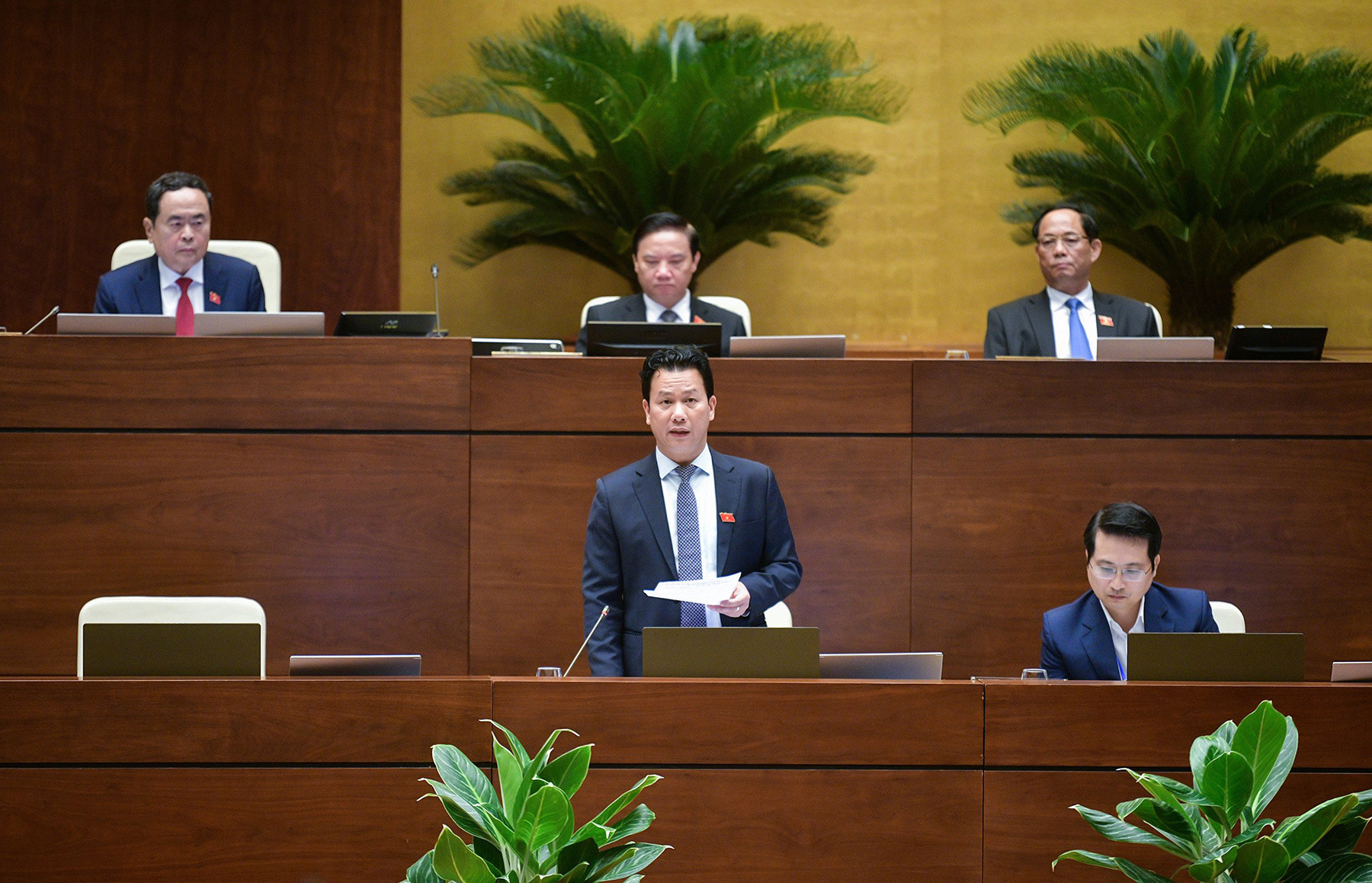
Khanh said the Ministry of Natural Resources and the Environment (MONRE), Ministry of Public Security (MPS) and local authorities have recently strengthened inspection and monitoring of mineral exploitation activities.
MONRE has carried out 12 inspection tours and 40 examination campaigns in the last five years on compliance of the regulations on minerals, with a total of over 900 licenses. The inspection has discovered 258 institutions and individuals who have committed violations, and therefore, released 258 decisions on imposing administrative fines totaling VND30 billion.
The violations in mineral exploitation were mostly for overexploitation (the output was higher than the permitted level) and beyond-boundary exploitation (the miners did not meet the requirements on environmental protection conditions).
Khanh rejected the opinion which says local authorities may not know the illegal exploitation and violations in mining, saying that it is easy to find out the activities of mining, because mining activities need big vehicles and equipment.
Nguyen Van Than, a National Assembly deputy from Thai Binh, asked Khanh for his view about the fact that many mine owners want to extend mining licenses as the current regulations sets a short time for exploitation activities.
In reply, Khanh said the duration allowed to be used to mine is 30 years at maximum, while the mining time can be extended many times, but the total duration must not be longer than 50 years. This means that the life expectancy of one mine is no more than 50 years according to the laws.
After 30 years of exploitation, if mines still have unexploited reserves, mine owners have the right to ask for extension in exploitation, provided that they have fulfilled all financial duties and observe the regulations on natural resources protection.
Before the Q&A session began, Khanh sent a report about the current situation of mineral exploitation and use to NA deputies.
As of December 2023, nearly 4,000 mineral areas had been exploited by 3,300 institutions and individuals, with 50 minerals.
Of the 4,000 mineral areas, there were 3,000 areas of minerals used for building materials with the total approved reserved of 500 million cubic meters in 2023 and the exploited output of 143 million cubic meters.
The licensing of rare and precious mineral exploitation is within the competence of MONRE as stipulated in Article 82 of the Law on Minerals. By December 2023, eight licenses for mineral exploration and 62 licenses for exploitation were valid.
As of the end of 2023, MONRE and local authorities had approved money for granting exploitation licenses, totaling VND61.4 trillion. Regarding the real collection, the figure was VND55.9 trillion from 2014 to 2023.
By the end of 2023, MONRE and localities put the mineral exploitation rights in 837 areas into auction with the winning prices 20-40 percent higher than the starting prices.
Rare earth resources
Answering questions about Vietnam’s rare earth potential, Khanh said the estimated reserves are 22 million tons in Vietnam. Vietnam also has 5.8 billion tons in the bauxite reserve, and 600 million tons of titanium.
Rare earth minerals in Vietnam are mostly located in the northwest with some mines exploited, including in Lai Chau, Lao Cai, Yen Bai, Cao Bang, Nghe An, Ha Tinh, Binh Dinh, Ninh Thuan and Binh Thuan.
According to Tran Quang Minh, a National Assembly deputy from Quang Binh province, rare earths is an issue of big concern by many countries in the context of the world’s ‘semiconductor rush’.
Khanh said when exploiting important minerals, it is necessary to think of deep processing and refining rights in Vietnam to serve the microchip semiconductor industry. Also, it is time for Vietnam to consider producing rare earths for export.
The problem is that Vietnam did not have in-depth research on rare earth reserve, and the deep processing of rare earth still cannot be implemented. Therefore, Vietnam plans to attract technologies to make deep processing of the mineral to serve the chip semiconductor industry.
MONRE and other ministries, together with the provinces where there are rare earth potentials such as Lai Chau, Yen Bai and Lao Cai, to tighten the control over rare earths.
“Some rare earth mines are located deep under the ground, while some other small mines are nearly on the surface. Therefore, it is necessary to intensify the management so as to prevent illegal exploitation,” Khanh said.
Quang Phong - Thu Hang - Tran Thuong